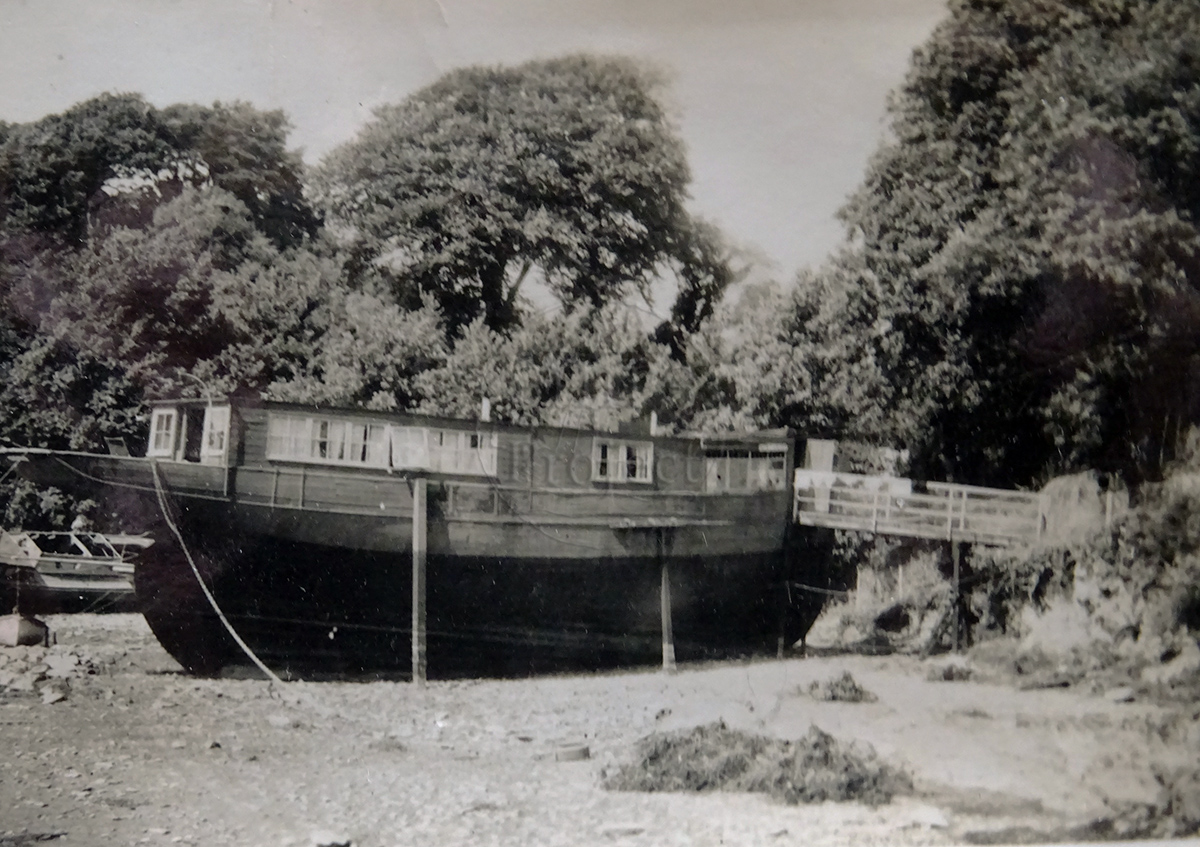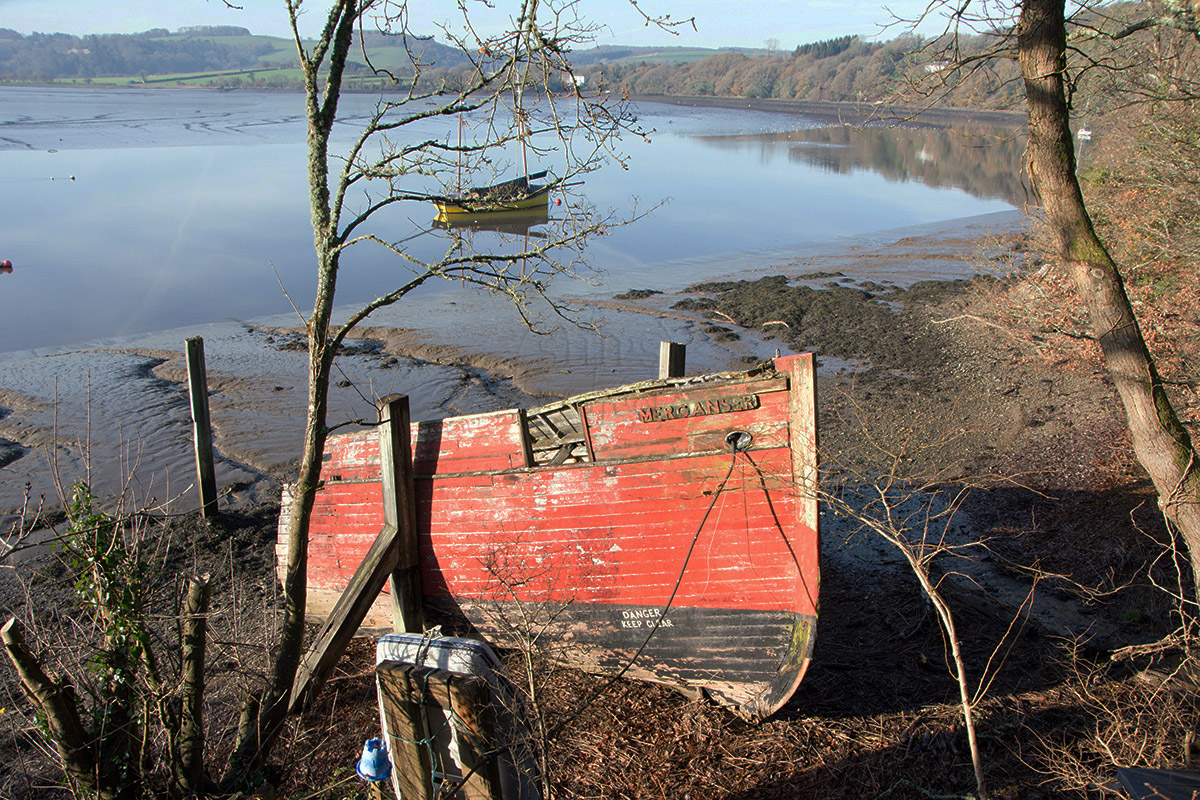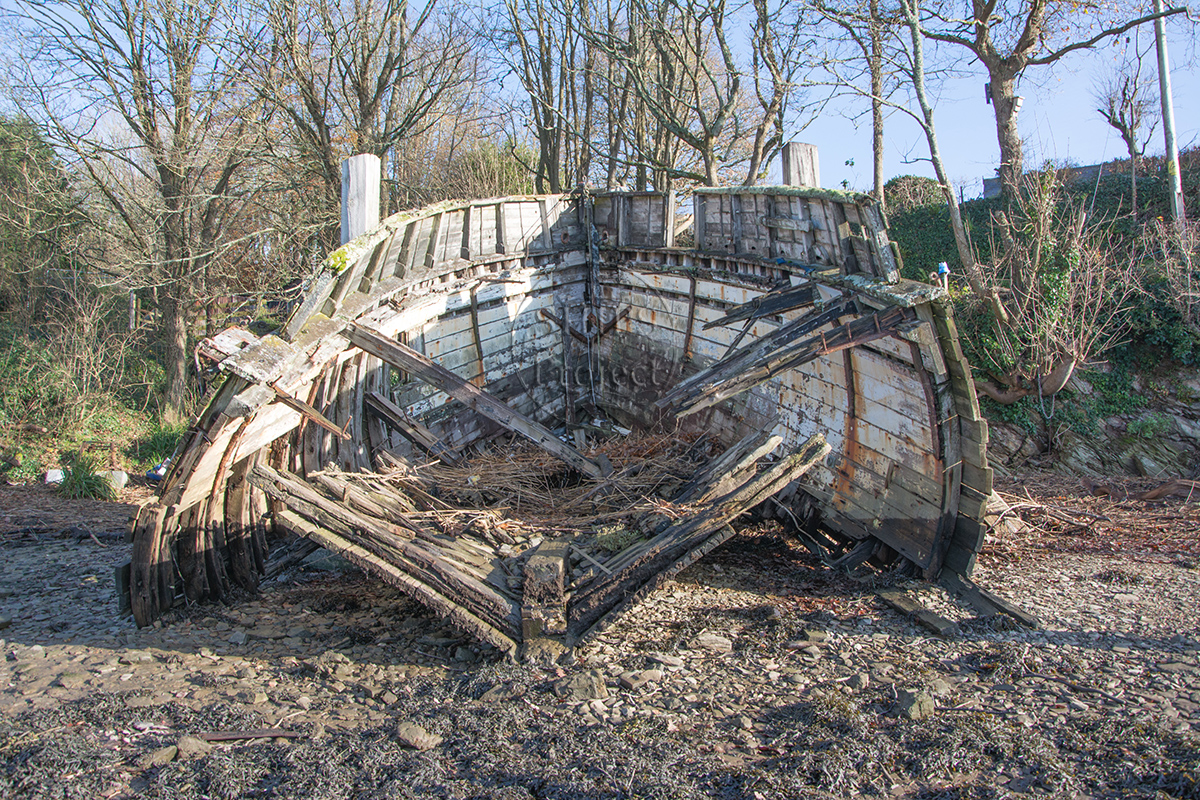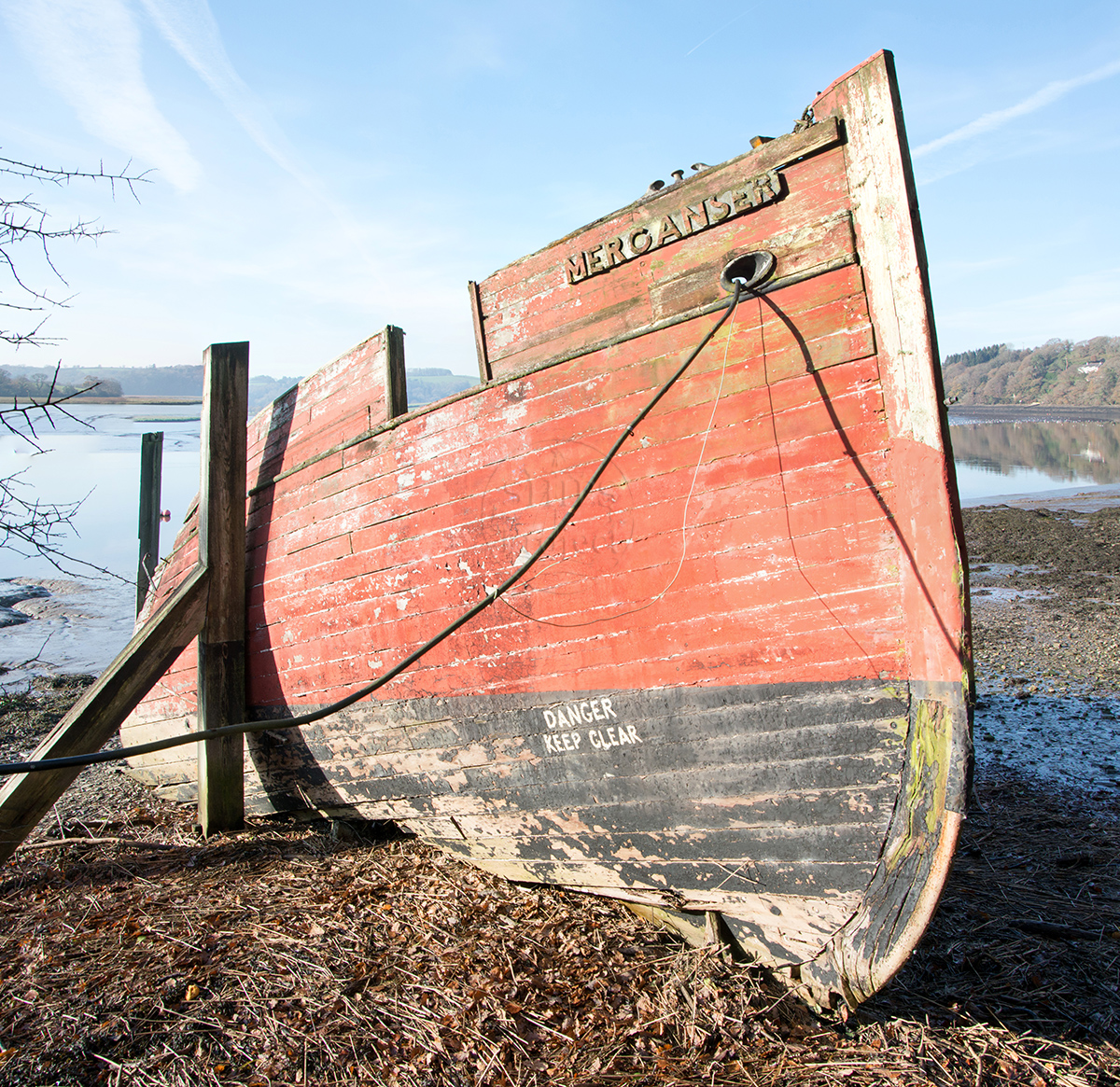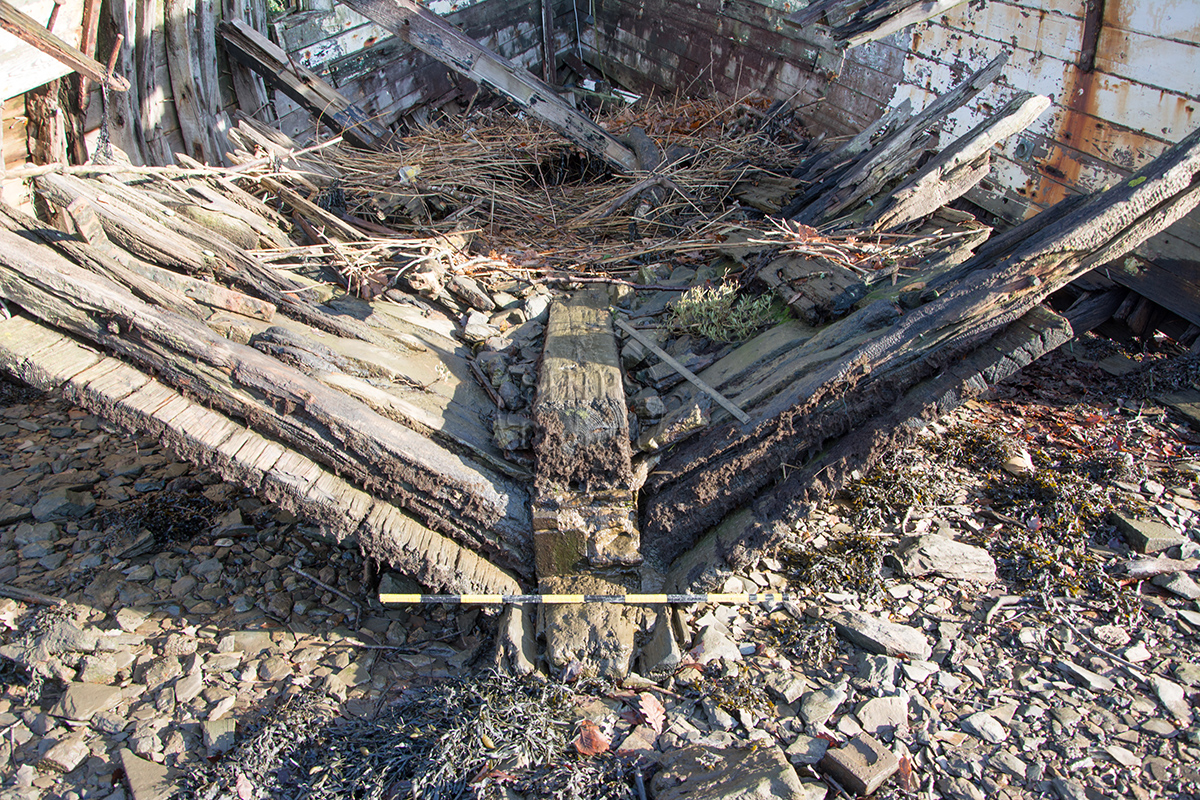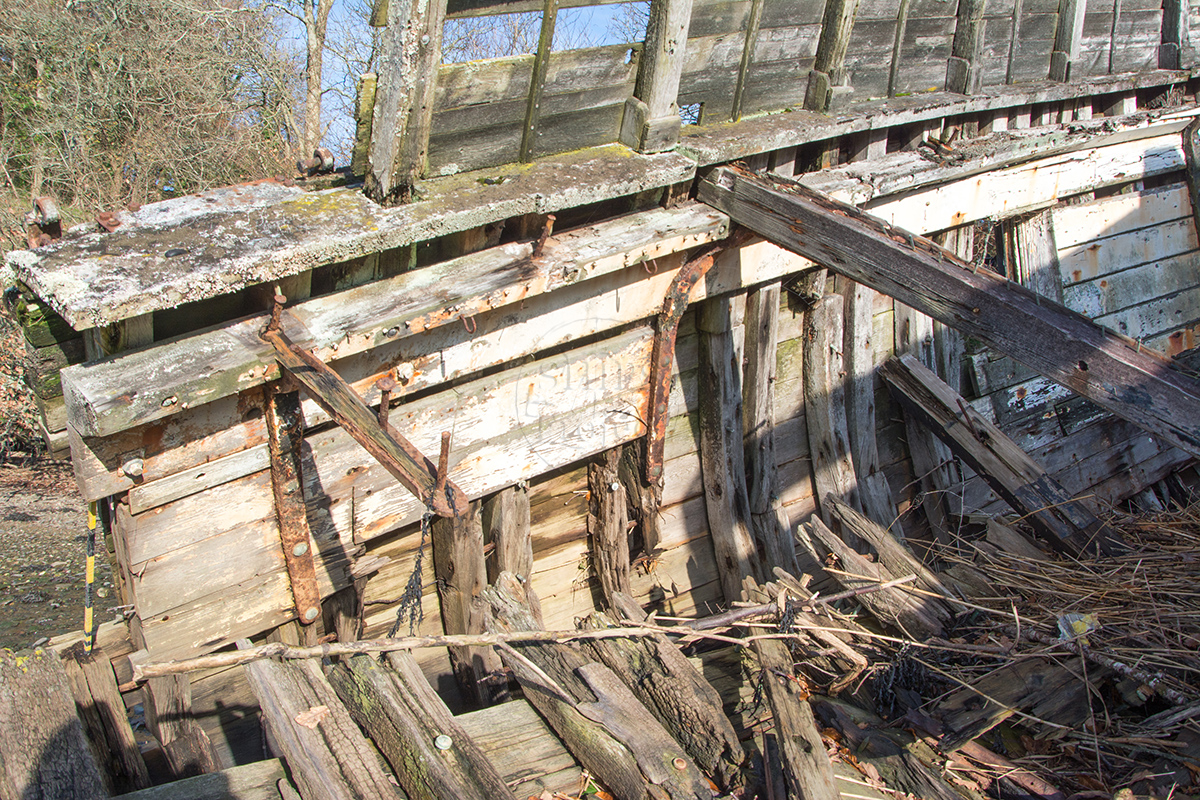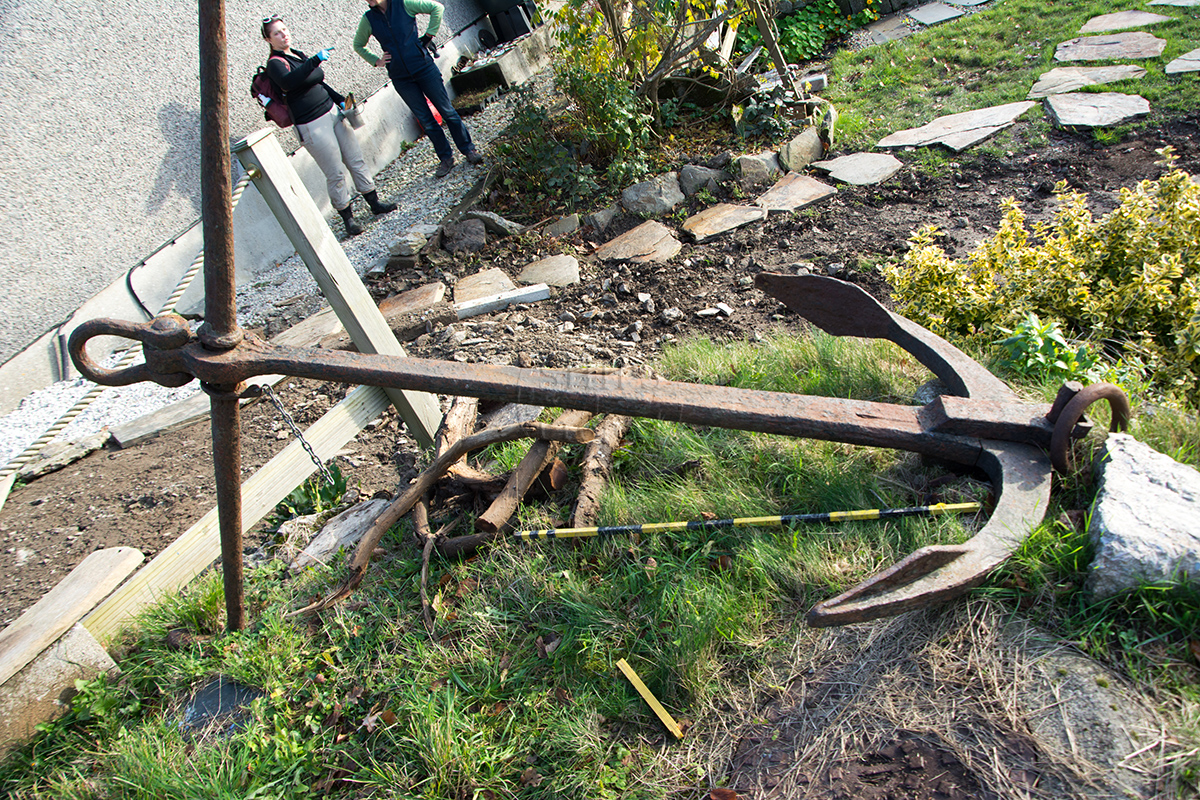Not Set
One half of the cutter-rigged yacht Merganser can be found on the foreshore at Hole's Hole.
Type
Yacht
History
Merganser was a 68ft long cutter-rigged yacht designed by Benjamin Nicholson and built by the Camper and Nicholsons yard at Gosport in Hampshire in 1887. The yacht was built for Hugh Leyborne Popham of Hungerford and she was registered in Plymouth, he owned the vessel for 33 years and would take part in yacht races and regattas with himself as skipper. Merganser seems to be well-known in the area; in one account of a storm in 1899 she was referred to as 'Mr Popham's yacht Merganser' reporting that she fell over on her side while beached at Mount Batten. Merganser was also registered as a fishing boat as PH37, records show that she was registered as a trawler with a crew of five people from 1887 to 1896 while also registered as a yacht. The cutter rig was altered to a ketch rig in 1906 and provided with a new set of sails by Hoopel in 1908 (Fig. 1). It has been suggested that her copper sheathing was stripped for munitions during the Great War and never replaced, but fragments of sheathing can still be seen on the foreshore around the hulk so she may have been re-coppered after the war.
Plymouth sailmaker Samuel Boon Harvey bought the yacht in 1920 then Robert Dell bought her in 1924, Dell was listed on the bill of sale as a 'commissioned gunner, Royal Navy', a warrant officer. Dell moved her to her current location and converted Merganser into a houseboat while living at Tamar View in Holes Hole. George Evans, a stove and grate merchant of Plymouth, then bought the yacht in 1930 and his daughter and son-in-law lived aboard for some years. Harry John Hall took ownership in 1947 using her as the family home and only finally leaving in the 1970s (Fig. 2). By now the hull was collapsing at the stern on her mud berth and most of her upper fastenings had been removed. The Parish Council ordered the hulk to be demolished but the National Maritime Museum got involved to see if she could be saved but she was considered too unsafe to move.
In 1975, a local craftsman called Charlie Hingston was employed by new owners Eric and Alison Paice to restore Merganser to her former glory. The hull was rebuilt to the original shape but sadly this work was not completed and the half-restored boat was sold to a local resident in 1986. Later, the partly-restored hull was cut in half by John Hall using a chainsaw and the stern section removed to prevent the yacht being occupied by squatters.
Please get in touch if you have any information about this vessel by sending us a message below.
Description
Only the forward part of the hull of this yacht still remains, pulled well up on the foreshore where she was originally beached. The remaining forward part was still largely intact in 2007 but has now collapsed.
A visit to the hulk in 2020 by The SHIPS Project showed that the forward part of the ship remains from the keel to the bulwarks. The hull is largely intact around the stem but a few metres aft the hull has separated along the line of the bilge so the sides have sheared off and dropped on to the beach at the aft end (Photo 2). The deck has gone and the remaining deck beams collapsed downwards at one end pulling the sides of the hull inwards (Fig. 4). The inner planking is missing at the after end and the structure of the hull can be seen, with its mix of iron knees and fastenings, original copper alloy fastenings and newer fastenings presumably from the 1975 refit (Fig. 3). The iron and early fastenings are still sound but the later ones are very brittle and can be broken by standing on one, as we found out. The stem still retains a small section of copper sheathing in at least two layers, the underneath layer being fastened with machine-made Royal Navy sheathing tacks bearing the broad arrow mark. Sections of sheathing could also be found on the beach suggesting that she was re-coppered after the 1918. Her current outer planking was from the 1975 refit and shows no signs of having had copper applied. Excavating around the broken end of the keel to record the dimensions uncovered timbers under the hull which appeared to be parts of a boat, further investigation showed that the timbers extended towards the river. The timbers may have formed a way on which Merganser was sat when she was beached.
An unusual lightweight folding anchor in a nearby garden is thought to have been once used by Merganser (Fig. 8). The removal of a pin from the crown allows the joined pair of arms to come free and be removed from the shank. The stock is secured by a wedge and can also be removed allowing the anchor to be folded up and fitted into a long and narrow space.
Most of what we know about this ship comes from the book Lost Ships of the West Country by Langley and Small. The HER record for the vessel says that she was converted from a yacht to a fishing smack which is incorrect, as official documents show that she was registered as a fishing boat from 1887 until 1896. Thanks go to Sue and John Pillar-Lea for photographs of Merganser and the additional information.
Location and Access
Hole's Hole, north of Weir Quay, Tamar River east side.
The remains of the Merganser can be seen by the side of the road, just to the north of the quay at Hole's Hole. The hulk lies on private land so should not be visited without permission.
Nearby hulks include Vussel ![]() , Tamerton 2
, Tamerton 2 ![]() , Tamerton 3
, Tamerton 3 ![]() , Tamar barge Saltash
, Tamar barge Saltash ![]() and the ketch Maline
and the ketch Maline ![]()
Last updated 03 Jan 2021
Information
Date Built:
1887
Type:
Yacht
Builder:
Camper & Nicholsons, Gosport
Official Number:
91817
Length
21m / 68.2ft
Beam
5.3m / 17.5ft
Draft
3.3m / 10.9ft
Construction
Timber, carvel
Propulsion
Sail, cutter rig then ketch rig
Tonnage
56.1 GRT
Portmarks
PH37
Outcome
Partly dismantled, 2010?
References
Not Set
Leave a message
Your email address will not be published.
Click the images for a larger version
Image use policy
Our images can be used under a CC attribution non-commercial licence (unless stated otherwise).



